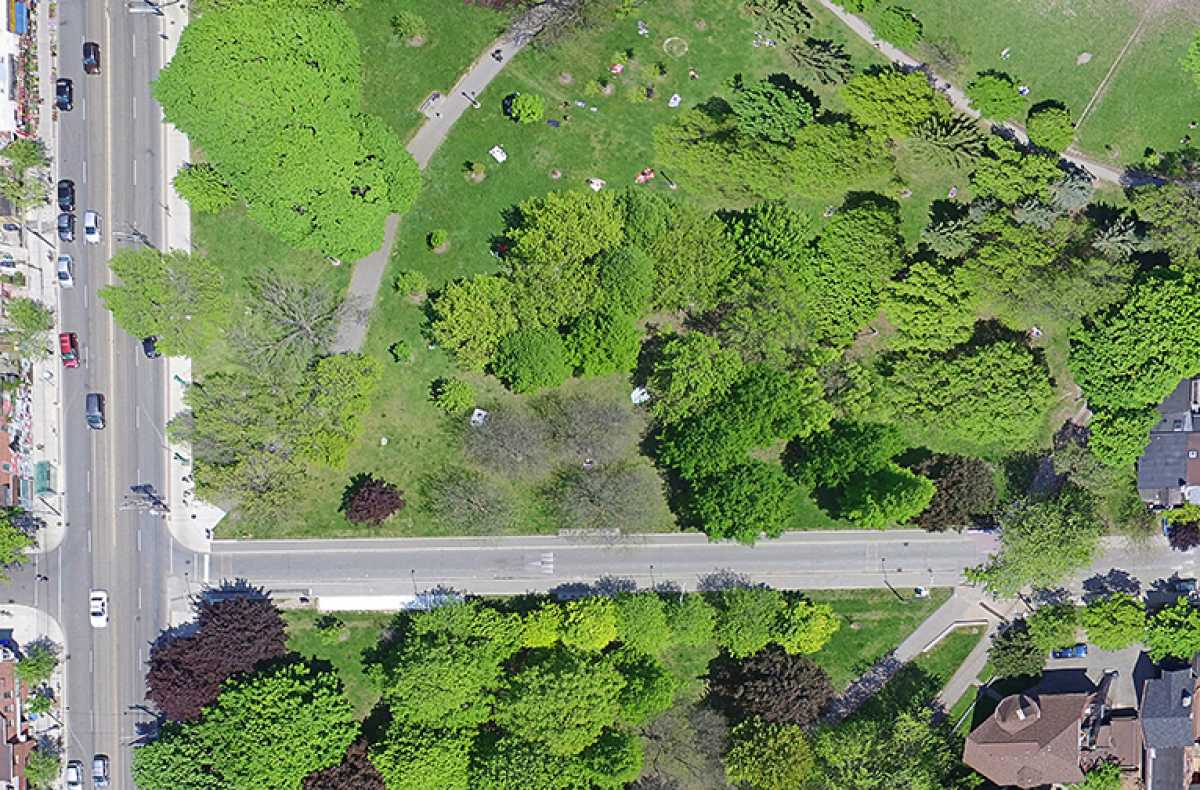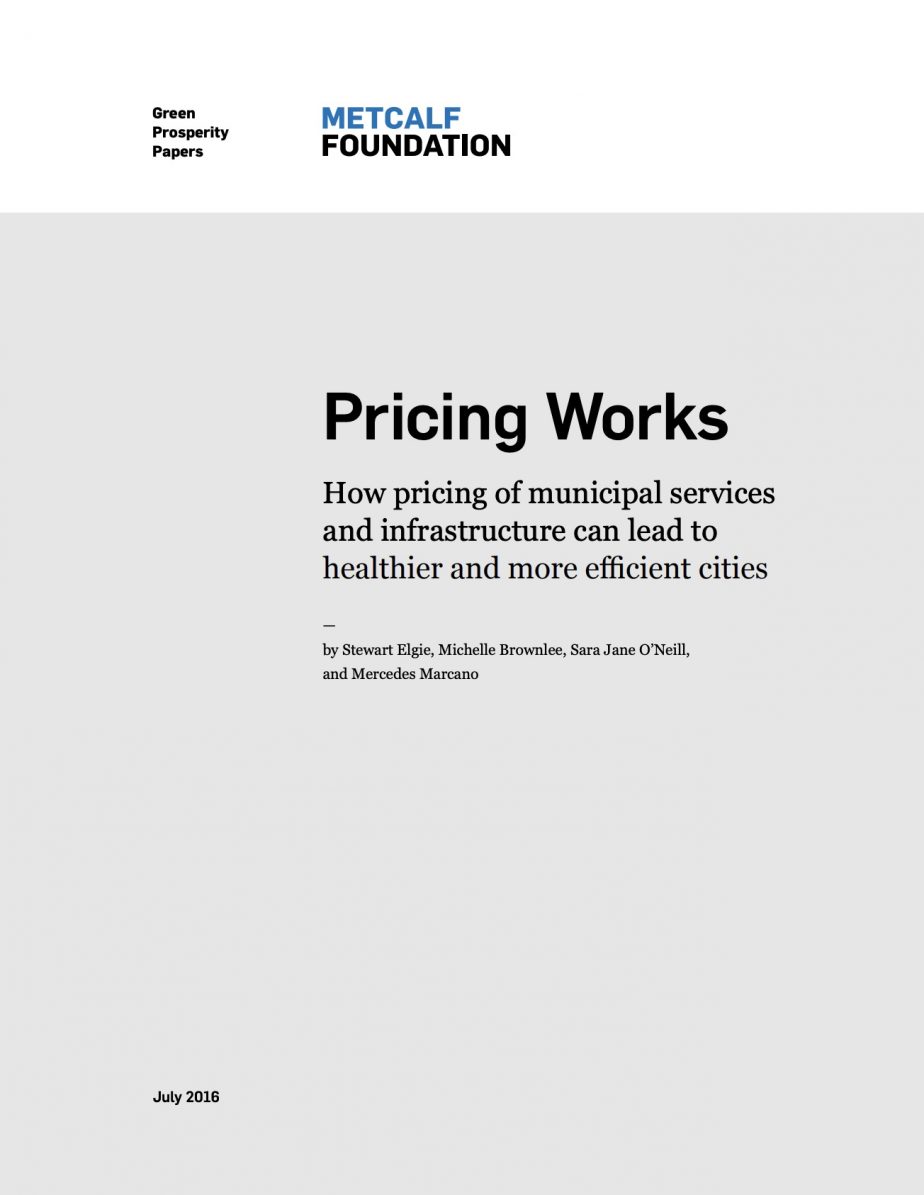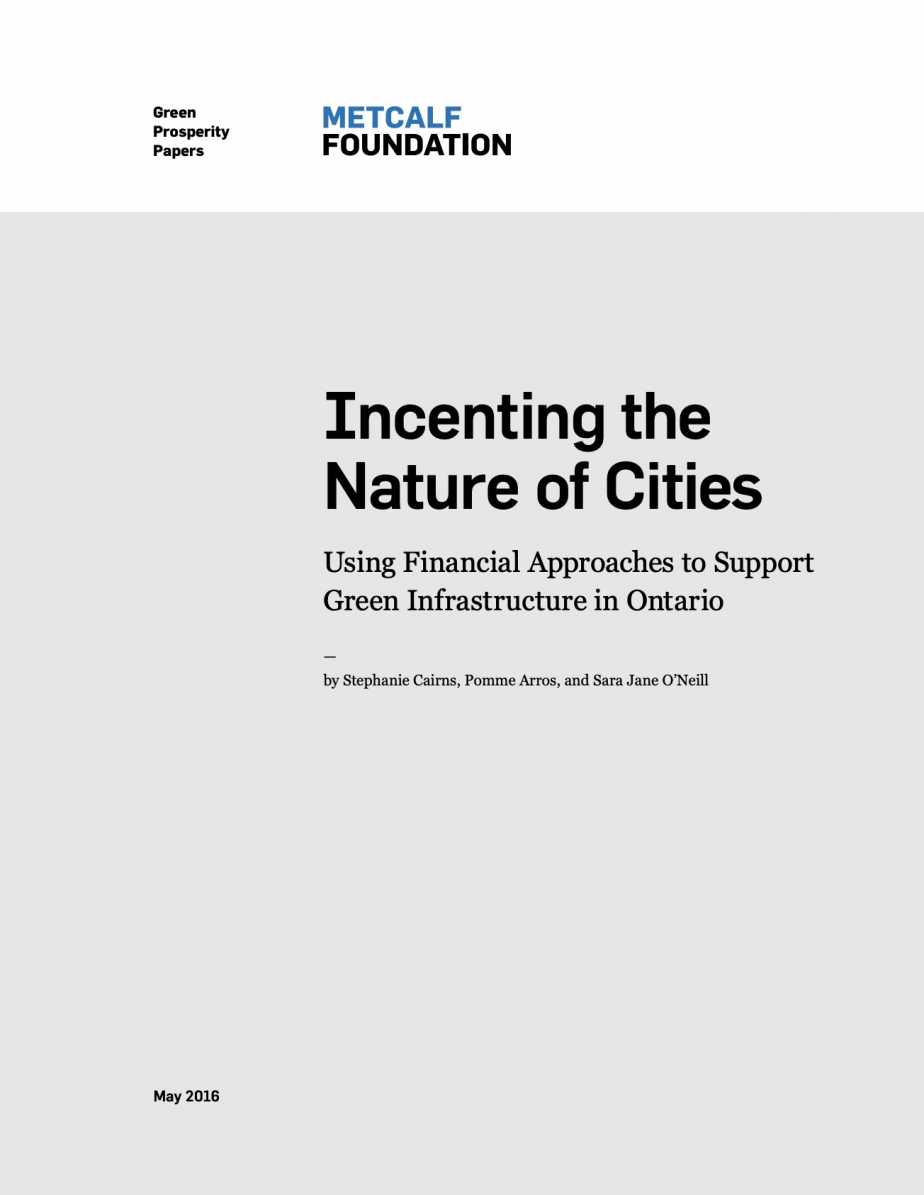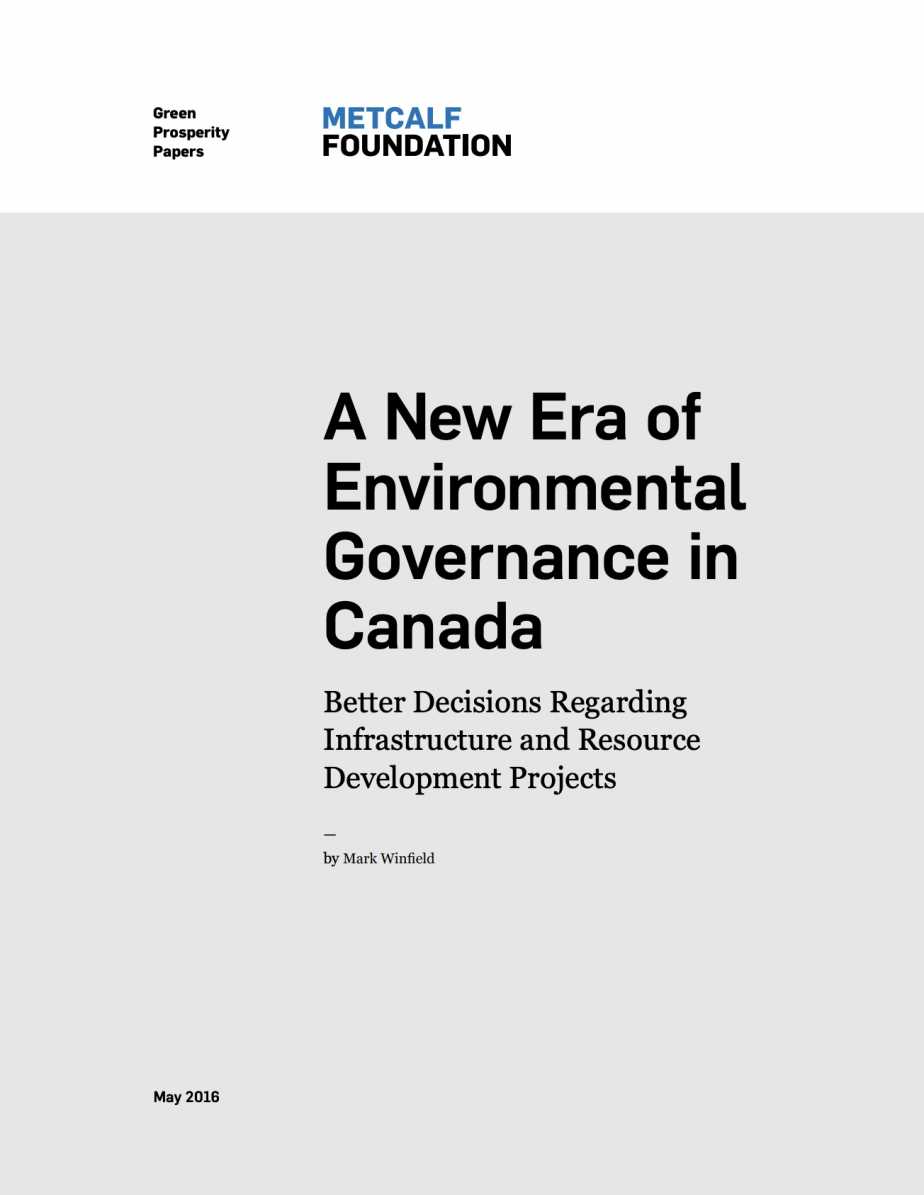Metcalf commissioned the Green Prosperity Papers to connect university-based researchers in Ontario with timely public policy challenges that bridge the environment and economy. Each paper identifies opportunities for building a low-carbon, resource efficient, and resilient southern Ontario, through topics such as social justice, fiscal reform, and democratic governance.
Featured Publication
– Trudy Ledsham and Dr. Beth Savan
January 2017
The population of the Greater Toronto Area is projected to increase by almost 40% over the next two decades. As our population grows, so will the number of cars competing for limited road space. A new approach to urban mobility is needed to address this congestion, one that ensures that all Torontonians have the ability to move easily and affordably across the city.
Supporting Toronto’s transition to a “cycling city” is a sensible and inexpensive solution to the mounting gridlock. Half of all trips taken within the GTA are short enough to be comfortably accomplished using a bicycle. If a large portion of these travellers made the switch to cycling, it would liberate significant road space, lower carbon emissions, and improve quality of life for all Toronto residents — whether or not they travel by bike.
Building a 21st Century Cycling City: Strategies for Action in Toronto offers a bold and practical vision of the city’s cycling future. Developed through a comprehensive consultation and research process, it presents an integrated series of recommendations grounded in three focus areas: behavioural factors, economic benefits, and policy and infrastructure. When executed in tandem, these recommendations can dramatically increase the city’s cycling population over the next five years.
– Ian H. Rowlands and Gord Stephen
July 2016
The “smart grid” modernizes our power system through the use of advanced information and communication technologies. These additions allow our power grid to produce and consume electricity dynamically in response to shifts in demand and supply. Ontario has been quick to adopt the smart grid, and many predict this transformation will reduce energy costs, create jobs, minimize environmental impacts, and enhance energy service reliability.
But for the 30% of Ontario households who experience “energy poverty,” such developments do little to address the ongoing struggle between “heat or eat.” Projections of the potential impacts of smart grid adoption prioritize the perspective of the average consumer, and rarely consider how such technology can affect more vulnerable households.
Vulnerable Households and the Smart Grid in Ontario seeks to bridge this socio-technical disconnect by exploring how energy poverty and the smart grid intersect. The paper identifies potential conflicts, and presents opportunities for Ontario to navigate its technical energy system transformation while improving social equity and economic resilience.
– Stewart Elgie, Michelle Brownlee, Sara Jane O’Neill, and Mercedes Marcano
July 2016
As Ontario’s cities, industries, and farms continue to grow, so do the impacts they have on our environment. Yet these environmental costs are not factored in the prices we see in markets. Market-based pricing policies — like environmental fees, taxes, or market-based instruments — can provide an incentive for fee-payers to explore innovative solutions to make more efficient uses of natural resources and minimize environmental harm.
Pricing Works examines opportunities for using pricing policy tools to help address environmental problems and generate revenue to increase the financial sustainability of our municipal services.
– Cheryl Teelucksingh and Laura Zeglen
June 2016
As Toronto continues to build and move to a green economy, we must reflect on how this new economy will benefit and be inclusive of all Torontonians. Racialized communities and other traditionally disadvantaged groups continue to face barriers in accessing decent work in the city. Under-employment, precarious employment, and persistent discrimination can prevent many from benefiting from Toronto’s recent period of growth and renewal.
Building Toronto illustrates how an inclusive green economy founded on high labour standards has the possibility to improve community wellbeing while it strengthens environmental sustainability.
– Stephanie Cairns, Pomme Arros, and Sara Jane O’Neill
May 2016
Changes in our climate have led to a dramatic increase in the number of extreme rainfalls hitting our cities. When this influx of rainwater hits our gutters, storm sewers, and other impermeable collection systems, it gathers oil and debris along its path — ultimately damaging property, local bodies of water, wildlife habitats, and human health.
Green infrastructure offers an alternative approach to water management that incorporates both traditional engineered systems and the natural environment. By treating stormwater at its source, instead of moving it elsewhere, green infrastructure minimizes the amount of water pollution in our cities and provides the opportunity to access rainfall as a resource for uses such as lot-level irrigation.
Incenting the Nature of Cities builds the business case for cities to invest in green infrastructure. The paper introduces six market-based tools that have been used effectively across Canada and the United States to support the expansion of green infrastructure.
– Mark Winfield
May 2016
When reviewing infrastructure and resource development projects in Canada, government leaders need to follow decision-making processes that are transparent, democratic, rigorous, and advance sustainability. For decades, two closely linked procedural policy tools — environmental impact assessment and mechanisms for public participation in decision-making — were thought to possess these qualities, and to offer the potential to balance the often conflicting interests of stakeholders in development projects.
However, A New Era of Environmental Governance in Canada argues that these tools have largely lost their legitimizing power due to government “streamlining” efforts that accelerate project approvals. As a result, affected communities and aboriginal peoples, non-governmental organizations, and even groups with economic interests in development outcomes no longer accept the decisions made using these processes.
Winfield’s paper charts the emergence and decline of these two procedural tools, and offers clear recommendations for how contemporary policy makers and political leaders may restore public confidence in their environmental governance.








